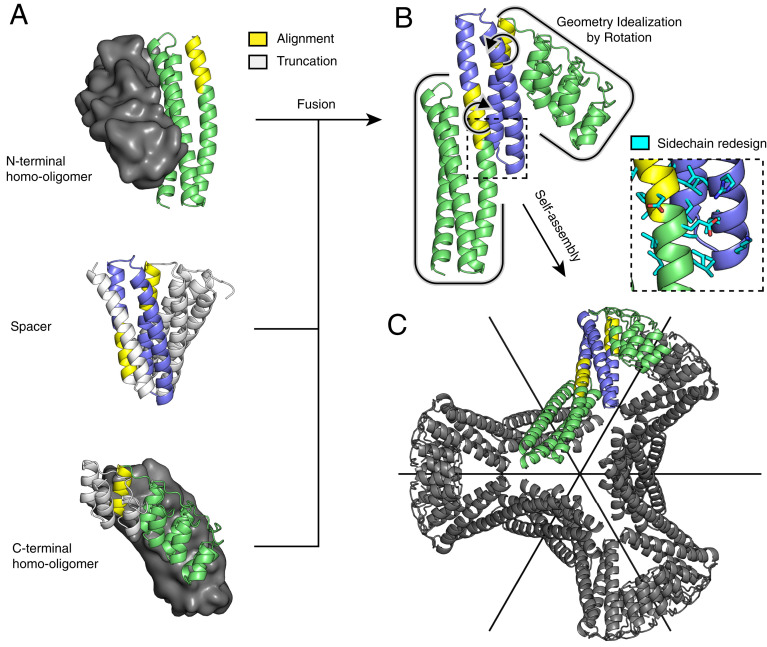Fig. 1.
Illustration of the tripartite design strategy for the D3 architecture. (A) The final structure is composed of two homo-oligomers (dimers, top and bottom; the partner subunit is shown as a surface in gray) and a DHR protein (middle). (B) All possible nonclashing backbone alignments are geometrically analyzed and filtered to generate a three-component fusion, which is idealized to the target geometry by small rigid body rotations and redesigned to improve core packing and remove exposed hydrophobics. (C) The result is a D3 assembly with symmetric C2 axes (black) that correspond to those of the original homodimers and a new C3 axis orthogonal and through the center.

